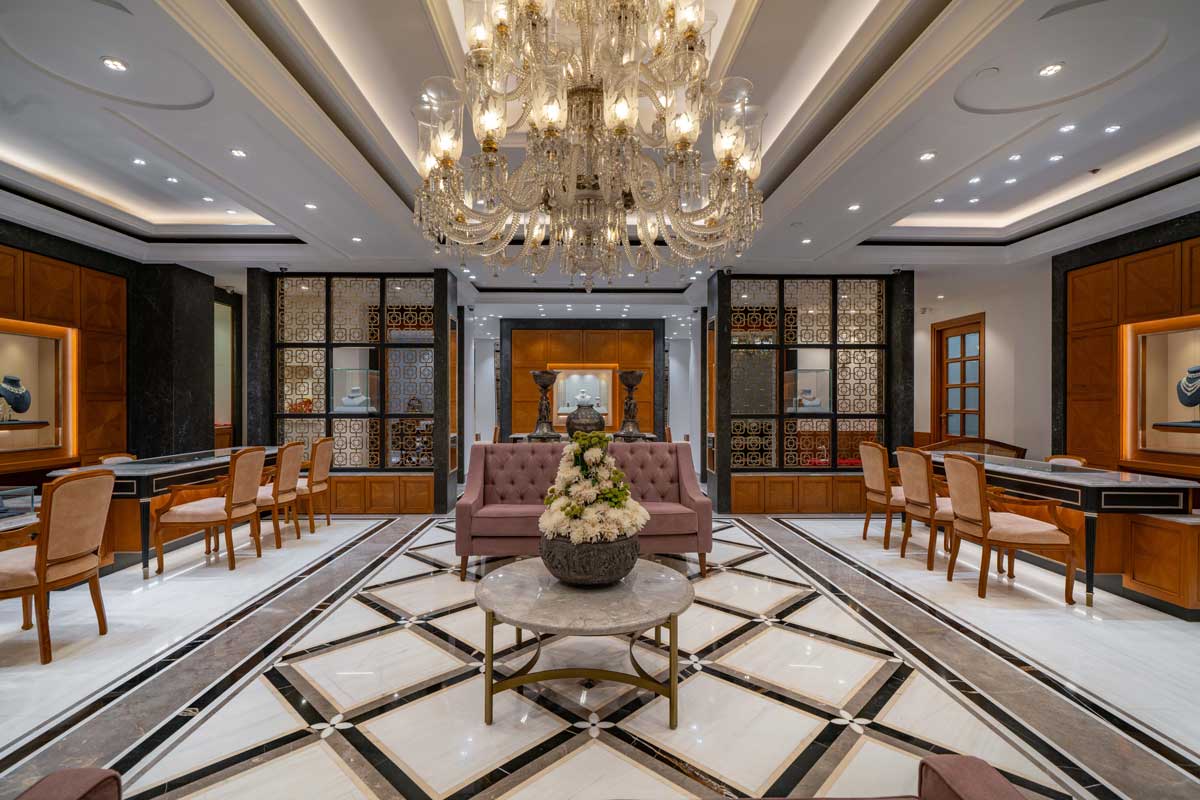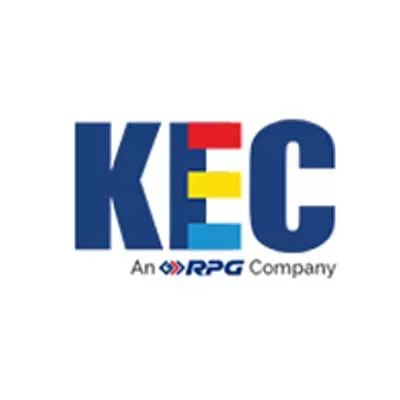Yes, there’s a tile for everyone! From the captivating beauty of onyx, the timeless elegance of marble and the durability of granite to limestone, an array of tiles is available to meet specific needs and transform spaces.
Architect Kapil Razdan, Co-Founder, Arquite, mentions nature-inspired tiles and emerald tiles as trends to watch for. “Ceramic tiles are a great choice for a budget-friendly option,” he says. “Porcelain tiles are also becoming increasingly popular with their unique look and durability, and are good for both indoor and outdoor spaces. Terrazzo tiles are gaining popularity due to their modern and stylish look. This trend encourages better use of available space and creates a harmonious connection between indoor and outdoor living areas.” He adds that emerald tiles are coming in a variety of shades and hues. “The colour green conjures images of jade, sage, mint and aloe.”
Meanwhile, Rahul Bansal, Partner, groupDCA, says,“Tiles will have a modern Indian look to them in terms of patterns, texture or colour. Indian companies are now manufacturing products that are beating Italian and Chinese companies. This trend is surging and will be seen this year as well as going forward.”
For his part, Gaurav Sanghavi, Partner, Pentaspace Design Studio, believes that more than tiles, terrazzo will be in vogue in the coming year, and in bolder colours. “Cement flooring will also be used as it gives a seamless look that interests people.”
Tiling for diverse spaces
In commercial and retail projects, wall tiles receive greater attention because of their durability, ease of maintenance, branding opportunities, ability to enhance ambience and practicality in high-traffic areas.
That said, Razdan lists some common tile types for residential projects that provide a range of options for homeowners to create beautiful and functional spaces:
Ceramic tiles:Versatile, durable and easy to maintain, they come in various colors, patterns and sizes.
Porcelain tiles: Known for their strength and durability, they are highly resistant to moisture, stains and wear and are suitable for high-traffic areas.
Natural stone tiles:Tiles such as marble, granite or travertine add a luxurious and timeless look to residential spaces.
Glass tiles:Offering a modern and sleek aesthetic, they come in a variety of colours, finishes and sizes. They can be used to create vibrant accents or backsplashes in kitchens and bathrooms.
Mosaic tiles:Comprising small pieces of glass, ceramic or natural stone arranged in intricate patterns, they add visual interest and can be used as decorative accents or feature walls.
Subway tiles:Rectangular ceramic or porcelain tiles traditionally used in subway stations, they have a classic, clean look and are commonly used for kitchen backsplashes and bathroom walls.
The selection of tiles varies based on the project and target market, according to Karam Bedi, Director & Promoter, JMD Group. “While tiles are commonly utilised in commercial and retail ventures, they are also extensively incorporated in residential projects.”He mentions that residential tile choices are influenced by factors such as size, type and design, with a focus on aesthetic appeal, durability, easeof maintenance and functionality. “The size of the tiles plays a role in shaping the perception of space, with larger tiles often conveying a modern and seamless ambience. The choice between ceramic, porcelain or natural stone tiles depends on the desired durability and specific aesthetic preferences of the project.”
Referring to a city like Mumbai, where houses are compact, Sanghavi believes that using tiles as a finish makes the space appear heavy. “Therefore, peopleopt for paint, wallpaper or textured tiles altogether. Exposed brick and concrete finishes are also preferred for wall finishes, which give a subtle but luxurious charm to spaces.” He adds that the selection of wall finishes also depends on the area of the space, in which one would want to use lighter materials like paint to make a room appear spacious. However, if the area is large, tiles can be used.
Tiles form the integral component of finishing work in any building for the flooring and dado works. Maintenance of the floor for an end-usercan be easier and more economical with a tiled floor.“For residential projects, we prefer having bigger tiles in habitable places with less furniture and smaller tiles for toilets,” shares Nandakumar PS, Project Head, Assetz Group. “This is because spaces define sizes; in toilets, the slopes to be provided for the water flow can be better obtained by using smaller tiles on floors. However, the wall dado can have bigger tiles. Ceramic tiles are preferred for wall dado and vitrified tiles forthe floor as they are much stronger and more durable than ceramic tiles.”
Nowadays, tiles are being used in several areas and have taken a new definition.“Some tiles come in large sizes and are called slabs,” informs Bansal. “They are extensively being explored in the residential sector, especially in bathrooms and toilets. They can replicate marble, concrete and other textured finishes and are being used in place of marble as flooring.”
Size matters
Large tiles offer a sleek and seamless appearance but can be costly to replace if they crack.The durability and cost-effectiveness of large tiles can vary depending on the materials used. Additionally, proper installation techniques, including substrate preparation and suitable adhesive application, are crucial for maximising the durability and longevity of large-format tiles.
Large tiles are thicker than the normal size of floor tiles. By virtue of this, Nandakumar says they are flatter and stronger with fewer undulations. “Also, the joints are much less on the floor due to the bigger size and the tile grouting is minimum in the joints. Large tiles can be laid with paper joints to offer a seamless finish in low-traffic areas and with spacers and vice versa in high-traffic areas.”
“Larger tiles have larger surface areas, making them easier to clean and maintain,” says Razdan. “With fewer grout lines, there is less opportunity for dirt, grime or stains to accumulate.” He adds that larger tiles can be more resistant to chipping and cracking, reducing the need for frequent repairs or replacement.
Bedi recommends incorporating large tiles in high-traffic areas to enhance visual appeal and create a seamless ambiance. Nevertheless, it is important to consider the potential cost of replacing them if they get damaged. To address this concern, he says,“It is advisable to have spare tiles available or opt for modular tile systems, enabling the convenient replacement of individual tiles. Further, choosing premium tiles explicitly crafted for high-traffic areas with durability and resistance to wear and tear guarantees cost-effectiveness and longevity.”
If the tiles are laid properly, there are fewer chances of them being damaged or cracked,believesSanghavi. “The construction and techniques will decide the future of the tiles. Proper levelling and bedding should be given importance while laying for the tile to sustain.” And Bansal adds, “Tiles do not crack; but if they are not installed properly, they become weak. They have to be installed with specific chemicals on flat ground and the area of application should be devoid of air gaps.” If there are hollow areas beneath, the tiles become brittle and eventually crack.
Cement and handmade tiles
Cement and handmade tiles have gained popularity for their ability to enhance the aesthetics of living spaces.
Cement tiles are mainly used in lounge areas, outdoor spaces and kitchens, says Sanghavi, adding that their use also depends on the theme and character of the project. “If you want to go for a rustic look, cement tiles come into the picture. To achieve a Moroccan-looking space, handmade tiles would be the best option. However, if a luxurious appearance needs to be achieved, we limit ourselves to glazed tiles.”
These tiles are brighter and more appealing than ceramic and vitrified tilesowing to their natural pigmentation, in Nandakumar’s view.“They are more suitable in low-traffic areas and preferred in hardscape areas.They can be used in independent villas and row-house projects. However, maintenance is required in terms of regular washing and waxing of the surface.”
According to Bedi, the inclusion of cement or handmade tiles can greatly enhance the visual appeal of living spaces. “These tiles bring a sense of individuality, craftsmanship and texture to the overall design. They are particularly favoured in projects seeking a rustic or vintage aesthetic.” However, he adds that it is vital to acknowledge that cement or handmade tiles necessitate diligent maintenance to preserve their condition. Specific maintenance guidelines may vary depending on the tile type and manufacturer’s recommendations.
Suitable for a variety of projects, concrete and handmade tiles demonstrate versatility and myriad aesthetic possibilities, as Razdan lists:
Residential flooring: Adding unique patterns and textures
Commercial spaces: Enhancing the aesthetic appeal of hotels, restaurants and retail stores
Hospitality and entertainment: Creating a luxurious atmosphere in hotels, resorts and entertainment venues
Historic restoration: Preserving the original character of heritage buildings
Outdoor spaces: Enhancing outdoor living areas
Feature walls and backsplashes: Creating focal points in both residential and commercial settings.
Architect Kapil Razdan, Co-Founder, Arquite, shares some maintenance tips for cement and handmade tiles
Regularly clean with a soft brush or mop and mild detergent.
Take care of grout by cleaning and sealing it periodically.
Clean up spills promptly to prevent stains.
Avoid harsh chemicals and acidic substances.
Protect the tiles from excessive moisture and standing water.
Inspect for cracks or damage regularly and address them promptly.
Safety first
Safety is crucial for flooring tiles.
Wet areas like toilet floors, utilities and balconies should have anti-skid tiles and should be less glossy to be more slip-resistant and rugged, says Nandakumar.They need regular maintenance by using certain rough objects to clean their surfaces (like brushes and scrubbers).
Bedi emphasises thatensuring a secure environment for occupants involves selecting anti-skid tiles that possess scratch-resistant qualities. Tile manufacturers offer specialised options with textured surfaces or coatings, enhancing traction and minimising the risk of slips, especially in moisture-prone areas like bathrooms and kitchens. Additionally, he says,“Choosing tiles with a high abrasion resistance rating guarantees their durability, maintaining their scratch-resistant properties and aesthetic appeal in high-traffic zones.”
Emphasising that anti-skid is an important factor in tiles, Sanghavihighlights, “Such tilesare not only necessary in bathrooms but in other areas like the kitchen as well. With the demand for designer tiles with variations, there are limitations to using such tiles in wet areas.” He suggests thatthis feature should come from the manufacturing process itself, which will have patterns along with being anti-skid and safe.
Up and above!
When choosing the best tiles for roofing in India, factors such as local climate, budget, architectural style and personal preferences should be considered.
In terms of popular preferences, Nandakumar says,“Tiles that are anti-skid along with an earthy look and finish are preferred to ward off the dusty look where surfaces are exposed to dust and heat. The aesthetic of clay with terracotta finish colours is more appealing and durable.”
Sanghavi points toMangalore tiles as best for roofing. “These are highly sustainable and environment-friendly. However, in terms of durability, one can opt for synthetic roof tiles like PVC.But as we are going towards sustainability, natural materials are a better choice.”
Bedi cites clay, concrete and slate tiles as popular choices. “Clay tiles are celebrated for their durability, ability to withstand harsh weather and timeless charm. Concrete tiles offer a cost-effective alternative with comparable durability and weather resilience. Slate tiles are renowned for their natural beauty, long lifespan and fire resistance.”
Razdan shares the types of tiles commonly used for roofing in India owing to their durability, weather resistance and thermal insulation properties:
Clay tiles: Also known as terracotta tiles, they are a popular choice for roofing in India. Made from natural clay,they are known for their excellent durability and thermal insulation properties.
Concrete tiles: They are manufactured from a mixture of cement, sand and water. They offer good durability, affordability and weather resistance.
Ceramic tiles: These are another option for roofing as they are lightweight, resistant to fading and provide good insulation.
Metal tiles:Steel and aluminium tiles are gaining popularity because of their durability, lightweight nature and long lifespan.
“For roofing, we need to use tiles that are sturdier and weather resistant as they will be exposed to various temperatures, rains and extreme climates,” says Bansal.“It is important to know the purpose of the roof, whether it will be a usable terrace or only a roof, as it will decide whether the tiles need to be heavyduty or not. It is also necessary to integrate grooves in the joints, which are filled with epoxy for the tiles to expand and contract.”
When do we interlock tiles?
Interlocking tiles offer advantages in terms of installation and flexibility.
“Interlocking tiles are those tiles that interlock and form a pattern,”explains Bansal. “They can be used for feature walls or in landscaping areas where a distinctive texture or pattern is desired. In this method, the joint lines are kept invisible.”
Interlocking of tiles is mainly done in paver blocks that are used in compound areas, podiums and driveways, says Sanghavi. “They are easy to install and are replaceable. People are experimenting with interlocking tiles indoors as well and wood is used significantly.”
“The simplest way to clean and maintain them is to sweep, vacuum or damp mop,” says Razdan. “Stains often can be removed with a damp cloth and some tiles are resistant to chemicals and oils. Removable and re-installable, they allow easy layout changes or reconfigurations.”While these can be applied to a variety of applications, he lists a few:
Flooring in residential and commercial settings
Outdoor paving for pathways, driveways and patios
Playground surfaces for safety and impact absorption
Athletic surfaces in sports facilities and fitness centres
Temporary event flooring for exhibitions and events
Garage flooring for durability and resistance to stains and chemicals.
According to Bedi, interlocking tiles have gained popularity in various projects owing to their flexible installation and design options. “These are particularly well-suited for outdoor walkways, driveways, patios and pool areas. With their interlocking design, they can be easily installed without the need for adhesive or grout. Their benefits include quick installation, the convenience of replacing individual tiles if needed and the ability to create diverse patterns and designs. Additionally, they offer good drainage properties and can withstand heavy loads.” He adds that it is crucial to ensure that high-quality interlocking tiles ensure long-term performance.
Nandakumar confirms that Assetz Groupuses interlocking tiles in the hardscape areas of gardens where there are curvilinear shapes of pathways that help to lay and cut them with less wastage. “These are also preferred in car parking areas. They are easy to lay, maintain and replace in case of any damageduring the course of usage.”
Next-generation tiles
While luxurious gemstone-etched tiles make a bold statement, other opulent options are available in the next generation of tiles.
For his part,Bansal does not recommend inlays or engravings on tiles as they are susceptible to cracking. “However, we can explore tiles that appear like onyx or other fancy stones.”
Meanwhile, Sanghavi sees printing on tiles as the next trend. “People want to experiment and have their own designs. Printing on tiles will give them the opportunity to do so, where they will see tiles as a canvas to express their ideas and art.” He believes that more than gemstone-etched tiles, this trend will be in demand.
Mentioning the array of high-end options that seamlessly blend durability, sustainability and customisation, Bedi says, “Projects need to be elevated with these tiles, crafting a luxurious ambience that exudes sophistication and style.”
Adding to the list of next-generation tiles, Razdan mentions options available that push the boundaries of design and technology. His list includes metallic finished tiles,3D and textured tiles,glass tiles, large-format tiles, digital printing technology andmixed materials and finishes.These offer endless possibilities to create luxurious and visually striking surfaces in residential and commercial settings.
The time has come… to discover a world of opulent possibilities in the next generation of tiles.
- SHRIYAL SETHUMADHAVAN


















